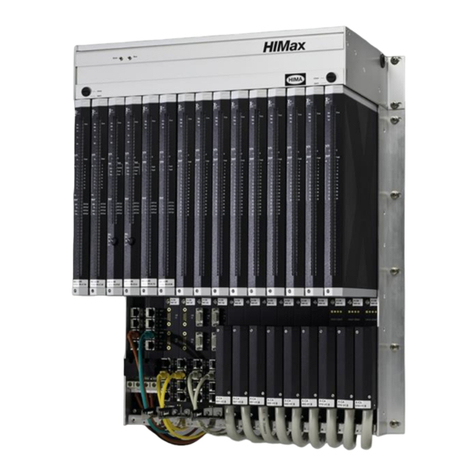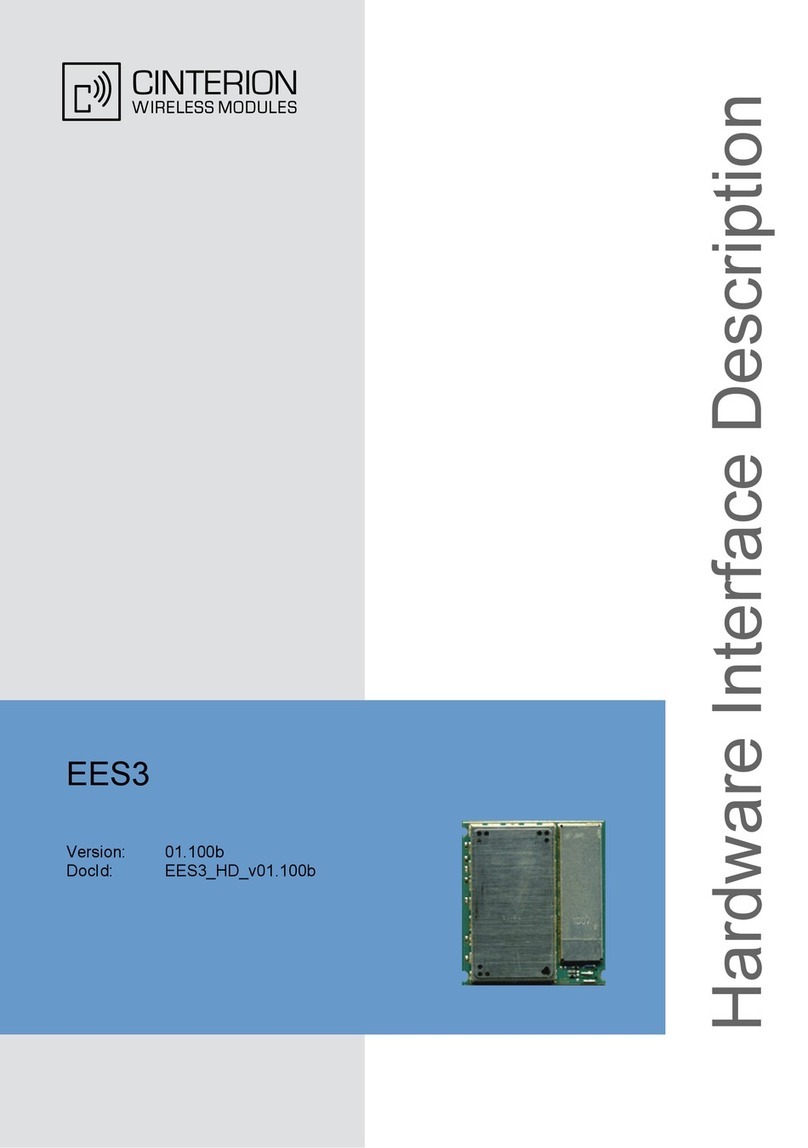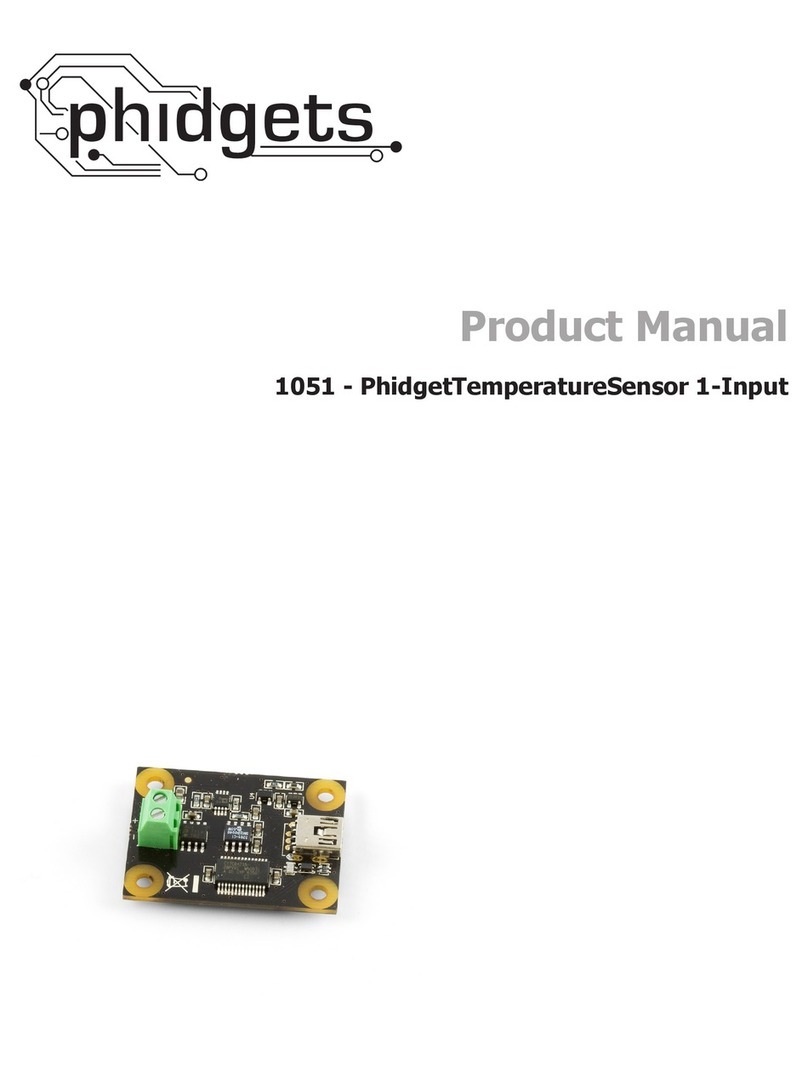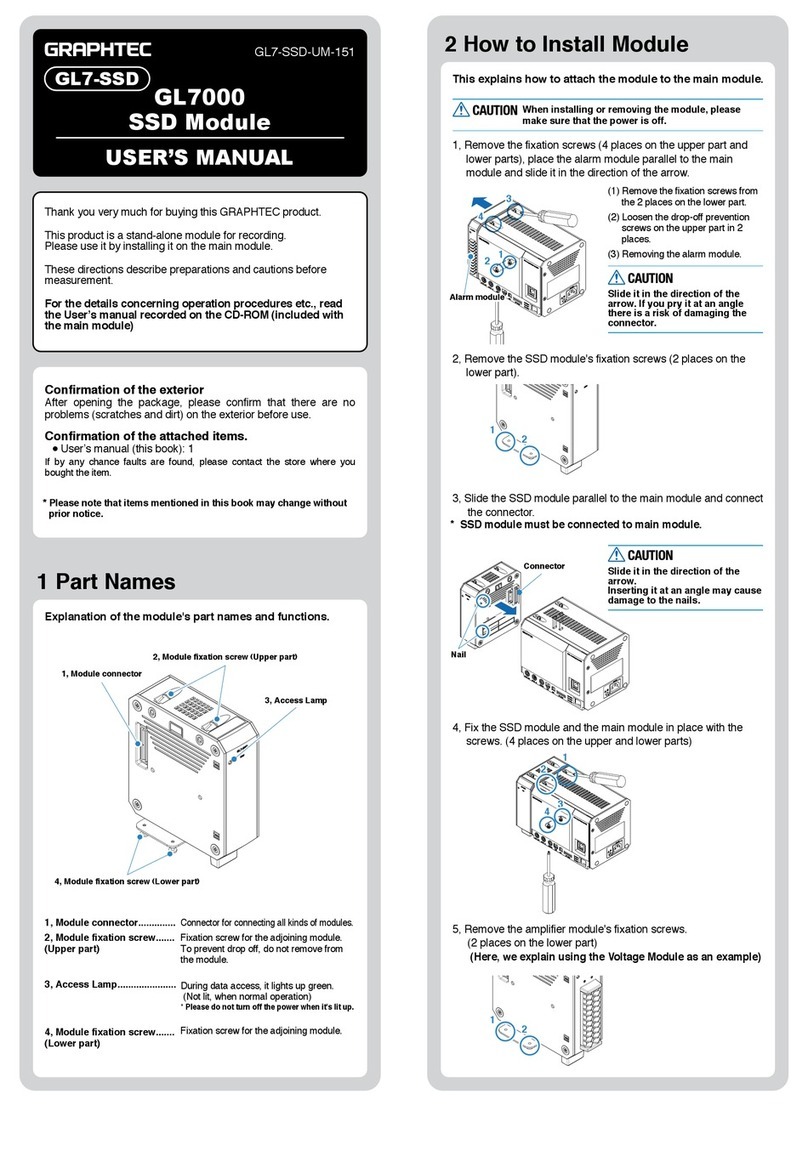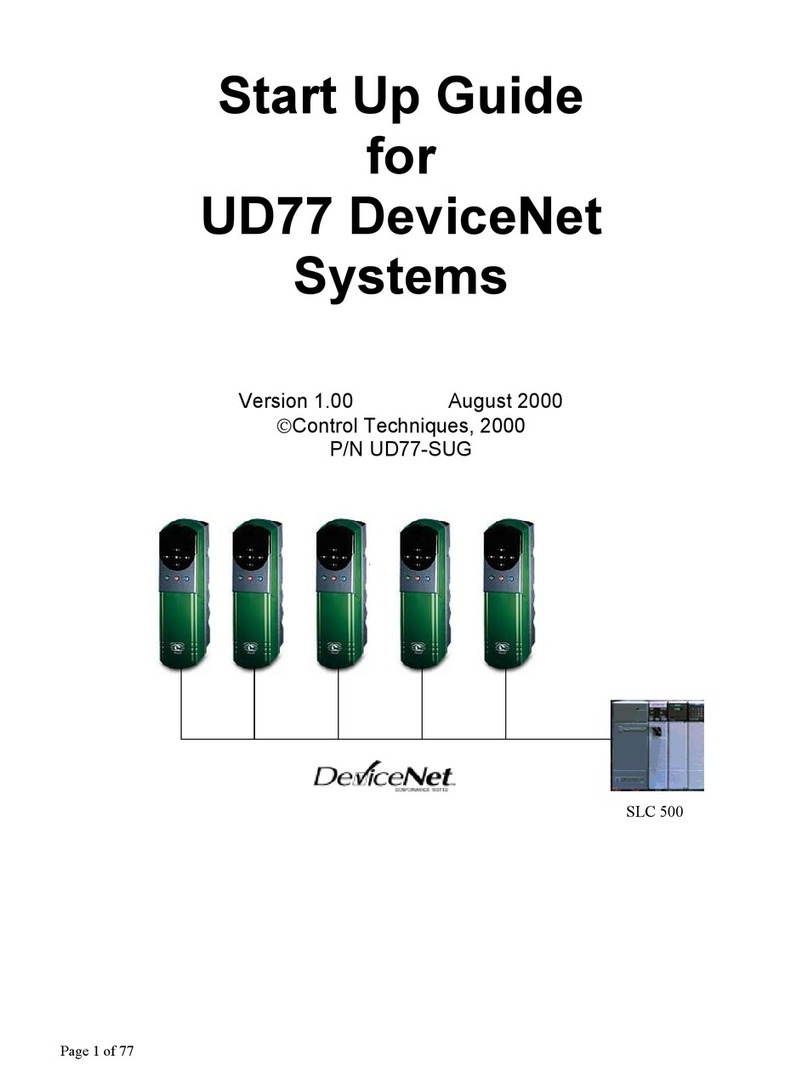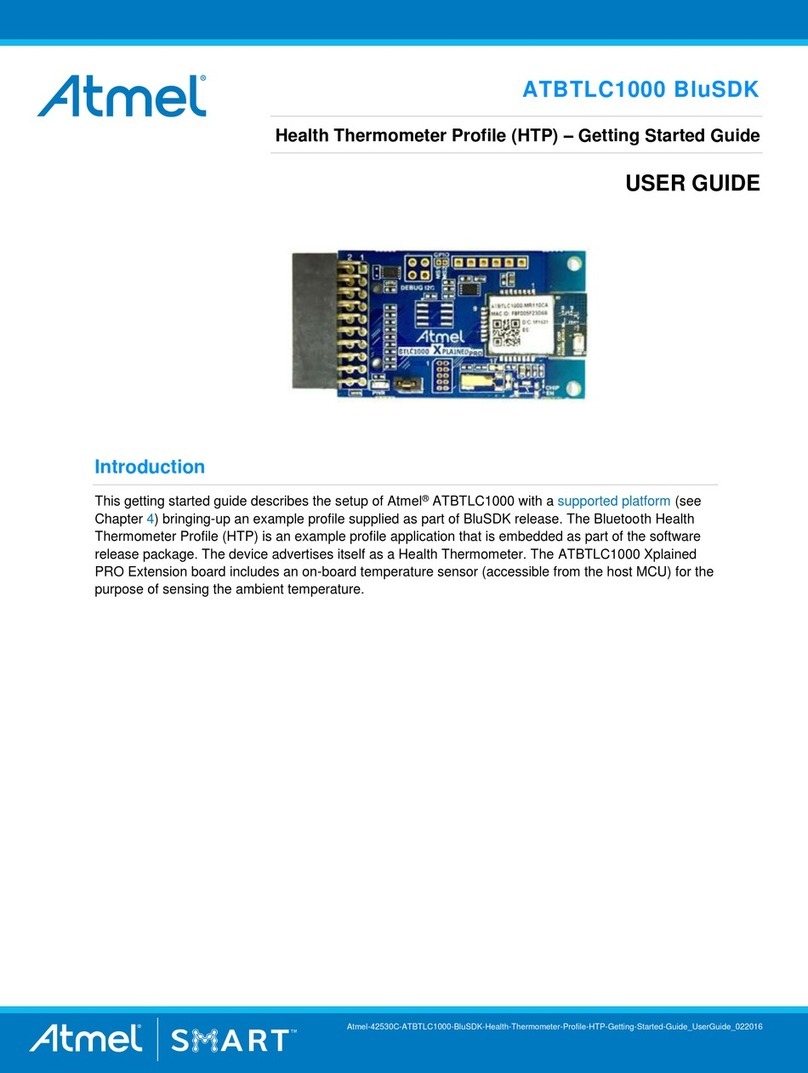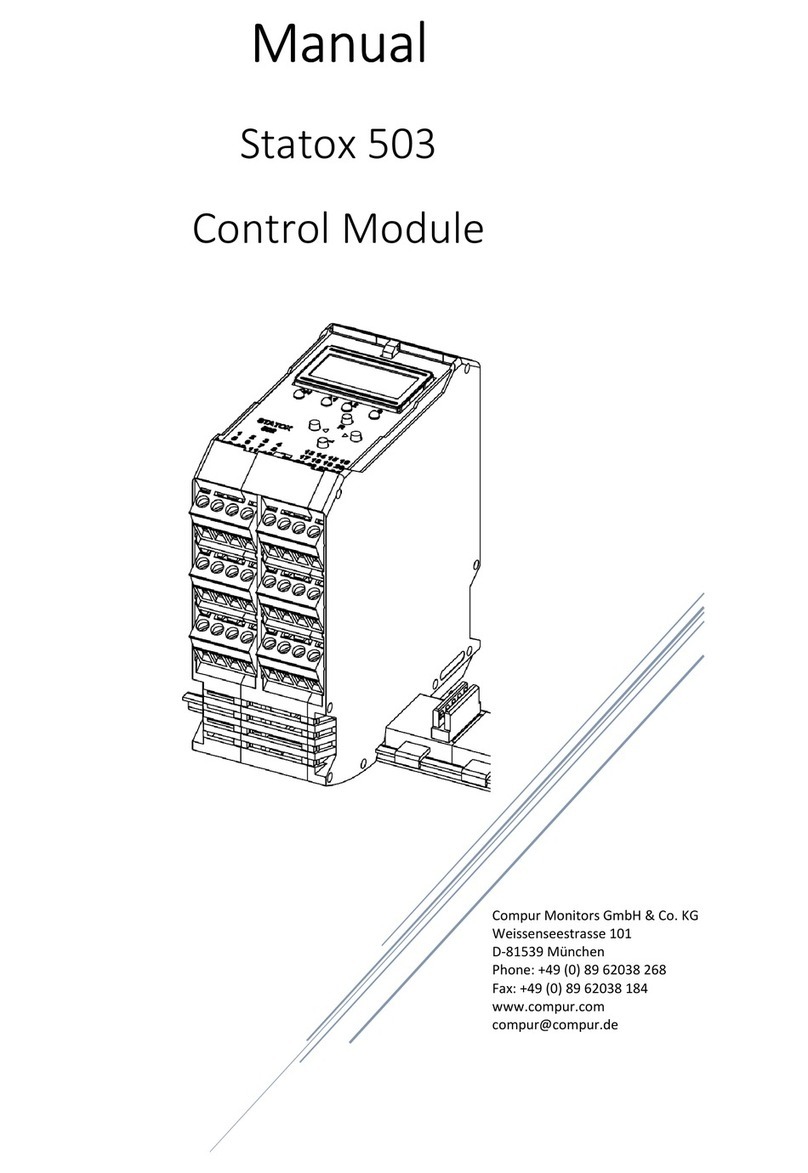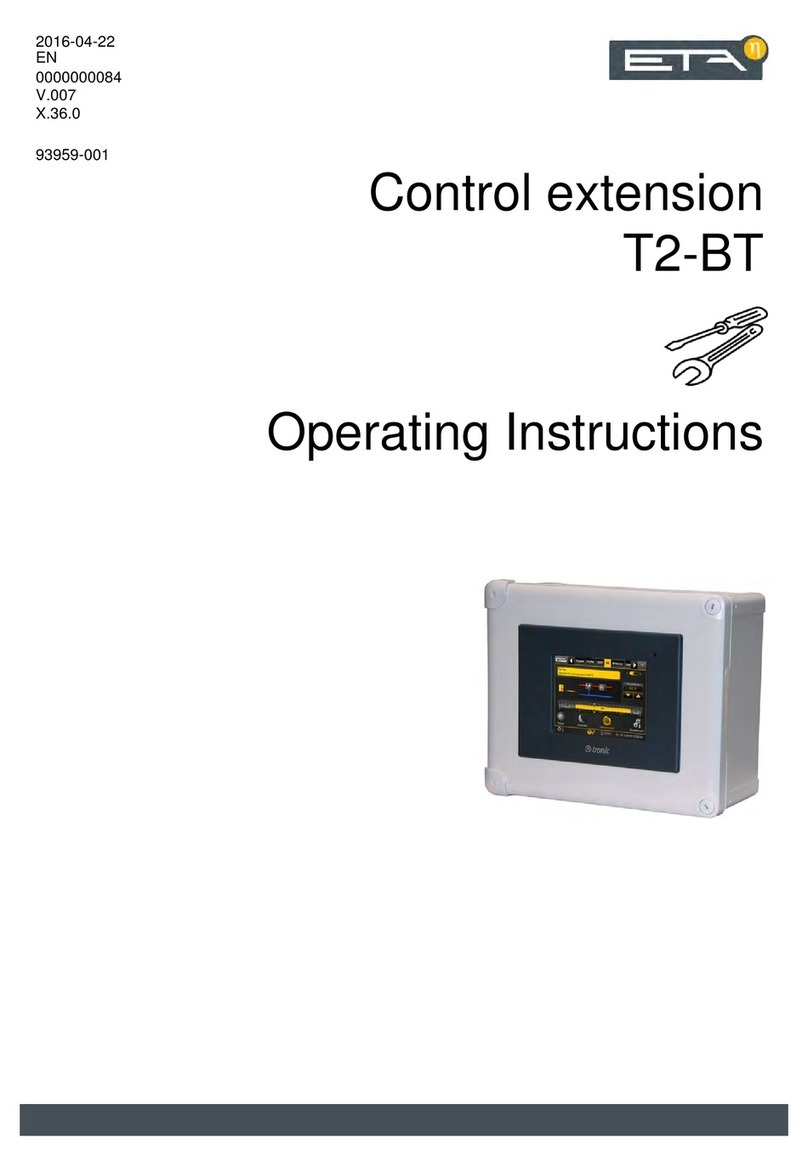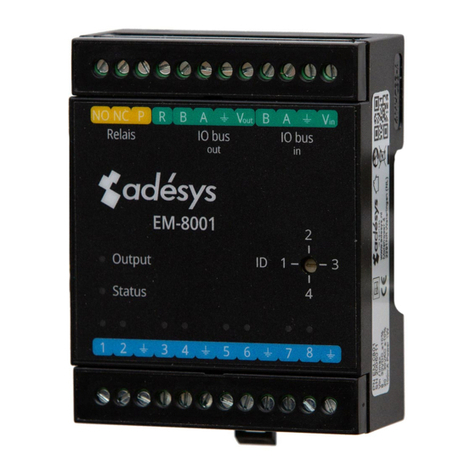Technifor UC500 Operating instructions

www.technifor.com
Technifor reserves all rights to modify its products.
This document is non contractual.
OPERATING AND MAINTENANCE MANUAL
UC500
CONTROL UNIT FOR MARKING MACHINES
Ref. DCD01/3067 - UC500_en_D - Last updated: 01/2009

Ref. DCD01/3067 - UC500_en_D 2/27
Table of contents
A - Introduction .................................................................................................................... 3
1. Foreward ................................................................................................................................................3
2. Unpacking ..............................................................................................................................................3
3. Identification of the marking equipment ..................................................................................................4
4. Regulation observance ...........................................................................................................................4
Declaration of CE compliance ...........................................................................................................4
Declaration of incorporation ..............................................................................................................4
Declaration of compliance to other directives ...................................................................................4
Declaration of compliance to norms ..................................................................................................5
5. Work station safety .................................................................................................................................5
B - Description of the Control Unit .......................................................................................6
1. Description .............................................................................................................................................6
2. Physical characteristics ..........................................................................................................................7
3. Technical specifications .........................................................................................................................7
4. Dimensional drawings of the Control Unit in box configuration ..............................................................8
5. Dimensional drawings of the Control Unit in rack configuration .............................................................9
6. List of accessories available upon request ...........................................................................................10
C - Communication ...........................................................................................................12
1. RS232 cable .........................................................................................................................................12
2. Dedicated Inputs/Outputs .....................................................................................................................12
Wiring of the female 9 SubD connector ..........................................................................................12
Connection diagram for the dedicated Inputs / Outputs ..................................................................13
Description of the communication signals .......................................................................................14
Timing diagrams of the communication signals ..............................................................................15
3. Generic Inputs/Outputs ........................................................................................................................18
Wiring of the female 25 SubD connector ........................................................................................18
Characteristics of the Inputs ............................................................................................................19
Characteristics of the Outputs .........................................................................................................20
4. USB-A key ............................................................................................................................................21
D - Installation ................................................................................................................... 22
1. Connections .........................................................................................................................................22
2. Wiring of the "Stop marking" contact ....................................................................................................22
3. Keyboard connection ............................................................................................................................22
4. Connection of the marking head to the CCU ........................................................................................23
5. Power supply connection .....................................................................................................................23
6. Assembling the accessories .................................................................................................................23
Mounting the supporting feet ...........................................................................................................23
Assembling the mounting plates .....................................................................................................24
CCU assembly in rack configuration ...............................................................................................25
E - Preventive maintenance .............................................................................................. 26
1. Changing the fuse ................................................................................................................................26
2. What to do if... ......................................................................................................................................26
F - Appendix ...................................................................................................................... 27

A
Ref. DCD01/3067 - UC500_en_D 3/27
AIntroduction
1. Foreward
This Control Unit is exclusively used to operate Technifor marking heads. If used for other purposes, Technifor
does not guarantee the quality of the results obtained. Technifor is not responsible for the damage the CCU may
cause in case of inappropriate use.
Four icons indicate important points:
2. Unpacking
Depending on the order, the Control Unit is packed on its own or with a machine.
Work station safety
Indicates different safety precautions to be taken during installation and operation of
the machine.
Instructions for use and warranty limitations
Indicates different operating procedures which respect warranty conditions.
Operating instructions
These tips help optimize the machine’s performance.
What to do if...
This iconrefers to the last chapterwhich describes the actions to be carried outin the
event of a problem or breakdown on the marking equipment.

AIntroduction A
Ref. DCD01/3067 - UC500_en_D 4/27
3. Identification of the marking equipment
The marking equipment is identified by:
• 1 identifcation tag on the control unit
Have the model and serial number of the equipment available when contacting Technifor.
4. Regulation observance
Manufacturer, GravoTech Marking SAS - 56 avenue Jean Jaurès BP 80015 - 10604 LA CHAPELLE SAINT LUC -
France (head office) declares:
Declaration of compliance
CE marking on the equipment attests the observance of the following European directives:
• Directive 2006/95/EC of the European Parliament and of the Council of 12 December 2006 on the harmonisa-
tion of the laws of the Member States relating to electrical equipment designed for use within certain voltage
limits.
• Directive 2004/108/EC of the European Parliament and of the Council of 15 December 2004 on the harmonisa-
tion of the laws of the Member States relating to electromagnetic compatibility.
Declaration of incorporation
The equipment will not be in service before the machine in which it is to be incorporated is declared conform to
the norm 98/37/EC of the European Parliament and of the Council of 22 June 1998 on the harmonisation of the
Member States concerning machines.
Declaration of compliance to other directives
Equipment is compliant with the following European directives:
• amended Directive 2002/95/EC of the European Parliament and of the Council of 27 January 2003 restricting
the use of some dangerous substances present in electrical and electronical equipment (RoHS).
• amended Directive 2002/96/EC of the European Parliament and of the Council of 27 January 2003 on waste
electrical and electronic equipment (WEEE).
Waste Electronic and Electrical Equipment
This symbol indicates that once this equipment has reached the end of its useful life, it must not be
disposed of with non-sorted municipal waste, in accordance with European Directive 2002/96/EC.
The equipment must be disposed of at an appropriate collection point for processing, sorting, and
recycling of Waste Electronic and Electrical Equipment (WEEE).
The elements which compose Waste Electronic and Electrical Equipment (WEEE) may contain substances which
have harmful effects on the environment or on human health.
By following these instructions, you are helping the environment, contributing to the preservation of our natural
resources, and protecting human health.

AIntroduction A
Ref. DCD01/3067 - UC500_en_D 5/27
Declaration of compliance to norms
The equipment is compliant with the following norms:
• Standard NF EN 61000-6-2 of January 2006 concerning electromagnetic compatibility (EMC) - Part 6-2: generic
standards- Immunity for industrial environments.
• Standard NF EN 61000-6-4 of March 2007 concerning electromagnetic compatibility (EMC) - Part 6-4: generic
standards- Standard on emissions for industrial environments.
5. Work station safety
To ensure security and productivity, read this manual before starting-up the equipment.
Instructions for use and warranty limitations
• This marking equipment is designed to function at a room temperature between 5 0C (41 0F) to 45 0C (113 0F).
• Position the Control Unit horizontally, in a dry, ventilated area, at least 20 cm (7.874 in) from the floor.
• The CCU’s heat sink device must be located more than 3 cm (1.181 in) of any obstacle.
• Never unplug a cable while the Control Unit is turned on.
• Grounding must be done according to the regulations in effect to ensure the safety of the personnel.
• Do not use this marking equipment in an explosive environment.
This Control Unit is exclusively used to operate Technifor marking heads. If used for other purposes, Technifor
does not guarantee the quality of the results obtained. Technifor is not responsible for the damage the CCU may
cause in case of inappropriate use.
Technifor will not be held responsible for injuries resulting from disregard for the above operating instructions or
other general safety rules applicable to the use of this equipment. Furthermore, disregard for the instructions will
void the warranty.
The modification or transformation of this equipment, adaptation and accessory
installation unrecommended by Technifor, integration, piloting by a command device,
connection to an external peripheral, modify this equipment’s characteristics and
therefore void the compliance with the applicable EU directives. These modifications
void Technifor’s liability. In this case, the machine and equipment installer is
responsible for the final work station’s compliance.

B
Ref. DCD01/3067 - UC500_en_D 6/27
BDescription of the Control Unit
1. Description
The Control Unit is designed to manage the markings performed by the numerically controlled heads
manufactured by Technifor.
It contains the control and power electronics, as well as an LCD screen.
A keyboard of the type PS2 is connected to its front panel.
The Control Unit is supplied with:
• 1 bridged male SubD9 connector, for the reset function
• 2 feet + 2 truss head screws, so it can be installed on a workbench
• 2 plates + 4 countersunk head screws, for wall mounting
1 : LCD screen
2 : Two feet (delivered unassembled)
3 : MiniDin 6 point(s): PS2 keyboard
4 : RJ45: Ethernet connection
5 : USB A
6 : SubD 9M: RS232 management connection
7 : SubD 9F: dedicated Inputs/Outputs
8 : Head/CCU connecting cable
9 : Power cable
10 : Fuse
11 : On / Off switch
12 : Heat sink device
13 : SubD 25F: generic Inputs/Outputs
2
1
345
6
7
8
9
10
11
12
13

ADescription of the Control Unit B
Ref. DCD01/3067 - UC500_en_D 7/27
2. Physical characteristics
• dimensions (L x w x h): 218 mm (8.583 in) x 180 mm (7.087 in) x 150 mm (5.906 in)
• weight:
- pneumatic version: 3.9 kg (8.598 lb)
- electromagnetic version: 4.1 kg (9.039 lb)
3. Technical specifications
• pneumatic micro-percussion and scribing machines
- power supply: 90-253 V AC - 50-60 Hz
- power: 150 VA
• electromagnetic micro-percussion machines
- power supply: 90-253 V AC - 50-60 Hz
- power: 300 VA

ADescription of the Control Unit B
Ref. DCD01/3067 - UC500_en_D 8/27
4. Dimensional drawings of the Control Unit in box configuration
1: SubD 9M: RS232 link
2: SubD 9F: dedicated Inputs/Outputs
3: SubD 25F: generic Inputs/Outputs
4: On/Off + fuse carrier
5: Power supply input: 90/253 V AC - 50/60 Hz
6: Connections to the marking head
7: Ventilator (electromagnetic version only)
8: Circular marking device option
9: EC plate
10: Two mounting plates (delivered unassembled)
11: MiniDin 6 point(s): PS2 keyboard
12: Two feet (delivered unassembled)
13: Allow clearance (connections and cables)
14: Air vent (DO NOT OBSTRUCT)
15: RJ45: Ethernet connection
16: USB A
17: USB B

ADescription of the Control Unit B
Ref. DCD01/3067 - UC500_en_D 9/27
5. Dimensional drawings of the Control Unit in rack configuration
1: SubD 9M: RS232 link
2: SubD 9F: dedicated Inputs/Outputs
3: SubD 25F: generic Inputs/Outputs
4: On/Off + fuse carrier
5: Power supply input: 90/253 V AC - 50/60 Hz
6: Connections to the marking head
7: Ventilator (electromagnetic version only)
8: Circular marking device option
9: EC plate
10: Two mounting plates (delivered unassembled)
11: MiniDin 6 point(s): PS2 keyboard
14: Air vent (DO NOT OBSTRUCT)
15: RJ45: Ethernet connection
16: USB A
17: USB B
18: SubD 9M: RS232 link
19: USB A

ADescription of the Control Unit B
Ref. DCD01/3067 - UC500_en_D 10/27
6. List of accessories available upon request
The accessories mentioned below are available upon request.
Power cable
Head/CCU connecting cable standard version
RS232 cable
UC500 version rack 19" 5U
T500W standard marking program
Ref. ELE01/192 Power cable 2 m (6.562 ft): Europe
Ref. 90100 Power cable 2 m (6.562 ft): Great Britain
Ref. 90225 Power cable 2 m (6.562 ft): Switzerland
Ref. 90164 Power cable 2 m (6.562 ft): USA
Ref.
MCOLE300/35 3 m (9.842 ft) Head/CCU connecting cable
Ref.
MCOLE300/36 6 m (19.685 ft) Head/CCU connecting cable
Ref.
MCOLE300/37 10 m (32.808 ft) Head/CCU connecting cable
Ref.
MCOLE300/38 15 m (49.212 ft) Head/CCU connecting cable
Ref.
MCORS109/9 • Used to connect the UC500 to the serial port of a PC or an automaton for data transfer.
Ref.
SEUC002/125 • Used to integrate the CCU in a cabinet.
The rack option consists of:
- 1 rackable front panel
- 3 mounting bracket(s)
- mounting kit: screws + nuts + lockwashers
- 1 USB extension
- 1 RS232 extension
- 1 mounting sheet
Ref.
IFI02/2650
Ref.
IFI02/2651 (USB)
• Developed in a Windows environment, this program combi-
nes all the capabilities and user-friendliness of a PC.
• Exists with a USB or parallel protection key.

ADescription of the Control Unit B
Ref. DCD01/3067 - UC500_en_D 11/27
Start cycle foot pedal
Button box for start cycle/emergency stop
Summary of available fonts (optional)
For more information about custom font designs, contact Technifor or the distributor.
Ref.
SEOP011/12 Office footswitch:
A simple touch of the pedal will launch a marking "n" times, leaving
the operator with both hands free. The foot pedal is not designed to
stop marking.
Ref.
SEOP011/13 Industrial footswitch:
Same use as described above. This foot pedal is especially desi-
gned for industrial work environments or for high rate production.
Ref.
SEOP013/224 • The green button is used to launch marking (same function
as the foot pedal).
• The red button is used to stop either a single marking in
progress or a series of markings before it reaches the end.
Pneumatic version Electromagnetic
version Scribing version
Font # 000 - continuous stroke -
Standard font standard not available standard
Font # 001 - separated dots -
Standard EM font T5070007 standard T5070007
Font 002 - continuous action -
Simplified font standard not available standard
Font dot by dot norme 5x7 -
5x7 font standard standard standard
Double line font T5070001 not available T5070001
Font OCRA T5070002 not available T5070002
Font OCRB T5070003 not available T5070003
Font dot by dot - Low density T5070004 T5070004 T5070004
Font dot by dot - Medium density T5070005 T5070005 T5070005
Font dot by dot - High density T5070006 T5070006 T5070006

C
Ref. DCD01/3067 - UC500_en_D 12/27
CCommunication
1. RS232 cable
Metallic SubD9F for shielded cables
2. Dedicated Inputs/Outputs
Wiring of the female 9 SubD connector
This connector allows to communicate with the machine. It contains
dedicated All-or-Nothing Inputs and Outputs. They are used in the
marking cycle.
Pin functions
Use exclusively shielded cable. Connect the shielding to the electrical ground on
either side of the cable.
Number Description Allocation
1 Internal power supply + 24 V - 300 mA max.
2 Relay # 2 Output - Fault
3 Relay # 3 Output - Marking in progress
4 Input 1 Input - Start marking
5 Gnd Grounding
6 Relay # 1 Output - Machine ready
7 Common Relay # 1-2
8 Relay # 3 Output - Marking in progress
9 Input 2 Input - Stop marking
2 m (6.56 ft)
Sub. D9F Sub. D9F
1
2
3
4
5
6
7
8
9
1
2
3
4
5
6
7
8
9
RD
TD
OV
RTS
CTS
Grounding
Grounding
51
96

ACommunication C
Ref. DCD01/3067 - UC500_en_D 13/27
Connection diagram for the dedicated Inputs / Outputs
Note
In the diagram above, the Inputs are wired to the internal power supply, available on the connector of the CCU
(+ 24 V DC). The "Marking in progress", "Machine ready" and "Fault" Outputs are wired to an external power
supply.
SubD 9F Machine Communication
CCU side
Start marking
External contact
Stop marking
Gnd
Fault
Marking in progress
External light
Machine ready
Common Relay
Marking in progress
External light
External light
External contact

ACommunication C
Ref. DCD01/3067 - UC500_en_D 14/27
Description of the communication signals
• Start marking (Input)
- To activate the "Start marking" Input, establish a zero potential electrical connection between pins 4 and 5.
- This connection must not be inferior to 500 ms nor superior to the cycle time of the marking file.
• Stop marking (Input)
- To activate the "Stop marking" function, remove the electrical connection between pins 5 and 9.
• Marking in progress (dry contact Output)
- The information "Marking in progress" is available between pins 3 and 8. It is provided by a potential free "dry"
contact (relay contact).
- This signal indicates that the CCU is performing a marking.
• Machine ready (dry contact Output)
- The information "Machine ready" is available between pins 6 and 7. It is provided by a potential free "dry"
contact (relay contact).
- This signal indicates that the CCU has received all the instructions required to perform a marking.
Note
The 7 pin is common to the "Fault" information and to "Machine ready". See: Connection diagram for the dedi-
cated Inputs / Outputs
• Fault (dry contact Output)
- The information "Fault" is available between pins 2 and 7. It is provided by a potential free "dry" contact (relay
contact).
- This signal indicates that the CCU has a fault (either of power, or of CPU).
- Characteristics: Maximum voltage: 24 V DC
Maximum intensity: 250 mA
- Status: Marking in progress: Depending on the mode selected
- Characteristics: Maximum voltage: 24 V DC
Maximum intensity: 250 mA
- Status: Machine ready: Closed contact
Machine not ready: Open contact
- Characteristics: Maximum voltage: 24 V DC
Maximum intensity: 250 mA
- Status: Fault: Closed contact

ACommunication C
Ref. DCD01/3067 - UC500_en_D 15/27
Timing diagrams of the communication signals
Operating mode with the internal program T05
Remarks
• Pause:
Whatever the mode selected: when marking is interrupted, the "Marking ready" signal returns to phase 1. Other
signals are not modified.
•Fault:
Whatever the mode selected: if failure occurs (origin or EM machine temperature failures), the "Fault" signal goes
to phase 1. The other signals return to phase 0 until operator acknowledgement.
• In-process mode:
Launch a "Start cycle" Close the dry contact between pins 4 and 5.
Stop the cycle Open the dry contact (usually closed) between pins 9 and 5.
Obtain the "End of cycle" information Depending on the mode selected
End of marking
cycle
Marking
Marking
Impulse
Start cycle
Information
Marking in progress
Ready to marking
Marking
File loaded

ACommunication C
Ref. DCD01/3067 - UC500_en_D 16/27
• Maintained mode:
End of marking
cycle
Marking
Marking
Impulse
Start cycle
Information
Marking in progress
Ready to marking
Marking
File loaded

ACommunication C
Ref. DCD01/3067 - UC500_en_D 17/27
• Pulse mode:
End of marking
cycle
Marking
Marking
Impulse
Start cycle
Information
Marking in progress
Ready to marking
Marking
File loaded

ACommunication C
Ref. DCD01/3067 - UC500_en_D 18/27
3. Generic Inputs/Outputs
Wiring of the female 25 SubD connector
This connector allows the connection of generic Inputs/Outputs.
Pin functions
Use exclusively shielded cable. Connect the shielding to the electrical ground on
either side of the cable.
Number Description
1 + 24 V - 300 mA max.
2Input
I
0
3Input
I
1
4Input
I
2
5Input
I
3
6Negative reference of the
I
0-
I
1-
I
2-
I
3 Inputs (common)
7Gnd
8 Output O0
9 Output O1
10 Gnd
11 Not connected
12 Not connected
13 Not connected
14 + 24 V - 300 mA max.
15 Input
I
4
16 Input
I
5
17 Input
I
6
18 Input
I
7
19 Negative reference of the
I
4-
I
5-
I
6-
I
7 Inputs (common)
20 Gnd
21 Output O2
22 Output O3
23 Gnd
24 Not connected
25 Not connected
113
1425

ACommunication C
Ref. DCD01/3067 - UC500_en_D 19/27
Characteristics of the Inputs
8 opto-insulated Inputs are available and controllable by positive logic.
They are divided into 2 groups. Each group has its own negative reference (pins 6 and 19), and must be wired to
the desired potential.
It is possible to control the Inputs with the + 24 V internal voltage available on pins 1 and 14, and referenced Gnd
on pins 7-10-20-23.
Note
The + 24 V internal voltage (pins 1 and 14) is not protected from short-circuits.
The current delivered by the + 24 V voltage (pins 1 and 14) should not exceed 300 mA.
• consumption and operating range of the Inputs
- applicable voltage per Input: 12 V - 24 V
- intensity consumed per Input: approximately 5 mA
• wiring of 8 inputs with power supplied by UC500
In this case the Inputs are no longer opto-insulated.
Negative reference
(common)
I
4-
I
5-
I
6-
I
7 (19)
Negative reference
(common)
I
0-
I
1-
I
2-
I
3 (6)
Internal connections

ACommunication C
Ref. DCD01/3067 - UC500_en_D 20/27
• wiring of 8 inputs with power supplied by the user
Characteristics of the Outputs
4 Outputs of the type NPN with open collector are available.
The maximum external power supply for the Outputs is 24 volts (continuous current).
The maximum current that can be commutated by an Output is 40 mA.
Remarks
• The + 24 V internal voltage (pins 1 and 14) is not protected from short-circuits.
• The current delivered by the + 24 V voltage (pins 1 and 14) should not exceed 300 mA.
The Outputs are not protected against polarity inversion and over current. When
connecting inductive charges use an anti-parasite protection and a free-wheel diode
to avoid damaging the Outputs.
Negative reference
(common)
I
4-
I
5-
I
6-
I
7 (19)
Negative reference
(common)
I
0-
I
1-
I
2-
I
3 (6)
Internal connections
+ 24 V DC power supply
+ 24 V DC power supply
Table of contents

